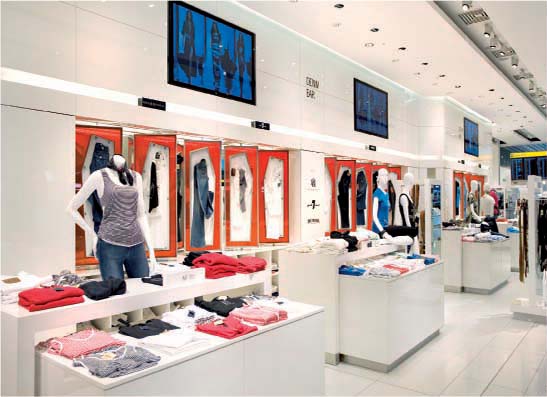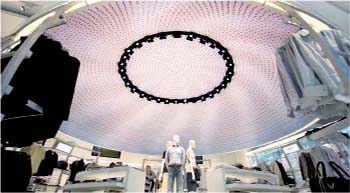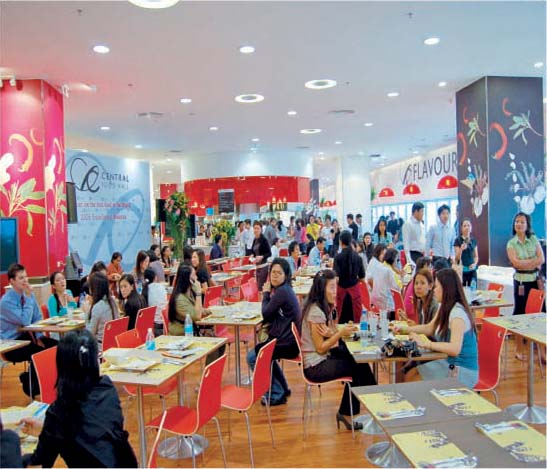IF YOU CAN’T COMMUNICATE VISUALLY BY DRAWING YOUR IDEA, YOU ARE SERIOUSLY HANDICAPPED AS A DESIGNER.
What some might see as a disadvantage, I see as an advantage. I’m not technologically sound. I don’t use technological means for inspiration. The traditional methods have been supplanted by the freedom of information that is available on the Internet. Because it is there and freely available, and people are inherently lazy, they choose that methodology for inspiration. Because of that, what they call inspiration is very often copying or imitation. So, my ignorance doesn’t allow me to go there.
What people call a “mood” board, which is inevitably a collection of other people’s work, disturbs me. Not only has it become a fact of life for the creators, but the clients have come to expect a kind of shortcut to the ultimate solution.
I am inspired by working with other people. I don’t think I could ever work on my own. I enjoy bouncing ideas around. I enjoy the development of ideas and being challenged. I’m inspired by the people I work with; I’m inspired by being alive; I’m inspired by reading; by visiting; and above all, by my own thinking. I spend a good deal of time thinking about projects and possible solutions rather than actually doing the solution. I’ve heard that some firms make sure there is some thinking time before turning on a computer.
I’m convinced that if you can’t communicate visually by drawing your idea, you are seriously handicapped as a designer. One of my great moments of inspiration was a lovely exhibition in London, called “Leonardo, the Designer.” The designers of the exhibition had found a wonderful way to take a da Vinci drawing and make a film of how he thought through the drawing. Above each drawing an animated film was projected showing how he thought through the drawing. You felt the thoughts coming down from his brain via his arm, into his pen, as the drawing materialized in front of you. Being able to “draw down” your ideas is a necessity for a designer to produce pure ideas.
Terminal 5 at Heathrow Airport in London called for a radical new image for this large airside duty-free store for Harrods.

One of my favorite projects is called “Great in Hong Kong.” What was most challenging was that this was a first for Hong Kong—it’s a 37,674 sq. ft (3,500 m2) upscale food court and supermarket in a shopping mall. We did a play on the name, GREAT, for the signage, identity, packaging, and so on. This project was challenging from the point of view of budget, space, and time.
The project was an attempt at some kind of counterculture. Nearly all of the traditional markets you would visit in China are very confusing. There is no clarity. They work on the assumption that, given the nature of Chinese shopping habits, where you might go to the market twice a day, you would know where to go for fish or meat. But to a stranger, they are completely nonnavigable and confusing.
A subject close to my heart is specialism. For example, if you go to Harvard Business School, you will become a businessman; if you go to an art school, you will become an artist or a graphic designer or an interior designer; if you go to a traditional university and study history or English, however, it isn’t assumed that you will become a historian or an English teacher or a writer.
There is a separation of education, for either education’s sake or vocationally for a career. Today’s education is driving students increasingly toward specialties so that when they emerge from design school they specialize as a graphic designer or an environmental designer. There’s nothing wrong with that, but the antidote is that our graduates need to be able to work collaboratively when they come out of school. Many aren’t taught in school that the object of the exercise is to work as part of a team, and that this team will collectively solve that task or challenge with all the skills you have. Just because you studied packaging doesn’t mean you will do only packaging. You need designers who do more and more collaborative work. If you’re just a packaging design firm you need to find a way of collaborating with other businesses so that you can provide a more holistic solution. Or if you’re a small firm that works across disciplines, your designers from the different disciplines need to work together.
This is a necessity if you want to work with major global clients. I set up FITCH in this model. In the FITCH business we are multidisciplinary in our studios. We also work collaboratively across our studios with a selection of disciplines. That’s good for us and good for our clients.




